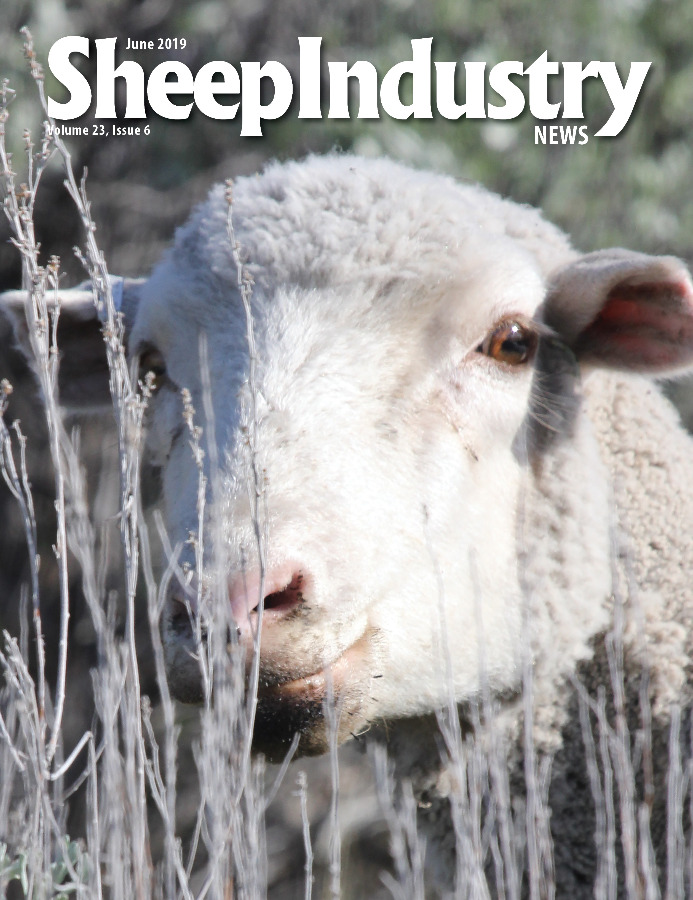
- June 2019
- President’s Notes
- Sharing Boise
- Idaho’s Rangeland Commission Brings Ranchers, Public Together
- Send ASI Your Sheep & Dog Photos
- Colorado Processing Facility Under Construction
- Guest Column: The Importance of Data Collection
- Crowds Flock to California Schools
- Market Report
- Around the States
- The Last Word
Idaho’s Rangeland Commission Brings Ranchers, Public Together
As a new generation of urban dwellers swelled Idaho’s population in the past two decades, the state found itself at a crossroads in the battle for public lands – which encompass more than half of Idaho’s real estate.
Second, third and fourth-generation ranchers long for the days of running sheep and cattle in what used to be remote areas that are now seen as a haven for outdoor enthusiasts who enjoy hiking, camping and mountain biking. This tug-of-war for public lands was one factor that led to the creation of the Idaho Rangeland Resources Commission in 1994.
Five voting members make up the commission – two from the Idaho Cattle Association, two from the Idaho Rangeland Committee and one from the Idaho Wool Growers Association. Since that time, the commission has worked to bridge the gap between public lands ranchers and the general public.
From press releases on dealing with domestic livestock in the wild to rangeland curriculum for Idaho school students, the IRRC has done it all in the past 25 years.
“I’d like to see every Western state have a commission like this, because one state can’t do it all,” said IRRC Executive Director Gretchen Hyde, whose family has a long history with both sheep and cattle ranching in the state. “Nevada has a commission, but they have a different approach than what we’re doing here. I feel like our long-term goal is youth education. We felt like we were 20 years behind when we started because there were environmental groups that had already figured out how to get into classrooms. Unfortunately, the livestock industry hasn’t always done a good job of telling its story, especially in a classroom environment. This is a niche that wasn’t being filled by any other association in the state.”
The group started by developing a series of posters before venturing into FFA and 4-H. Then came a school curriculum that caters to fourth through sixth graders in state, as well as an advanced curriculum suitable for high schoolers interested in rangeland careers.
“It’s still really tough for people to think of rangeland as a career option,” Hyde said. “Lots of kids think about forestry, but they don’t think about the range. We’re trying to change that. It involves dealing with wildlife habitat, livestock management, wildfire and other issues. The more we expose kids to rangeland, the more they can understand the environment they live in.”
With the advent of social media, the commission ventured into video production with its Life on the Range series. Videos introduced viewers to sheep and cattle producers and the ways their operations interact with public lands. A new five-part series on wolves in the state debuted online in May and is now available for public viewing at LifeOnTheRange.org.
“We kind of got there by accident,” Hyde said. “We did a video with Phil Davis, who has cattle in Cascade (Idaho), and had seen a big impact from wolves. And he’s ranching on all private land. He had a cow killed, but what was so disturbing is there was no blood and guts like you might expect. There was no evidence that it was a wolf kill until they did a necropsy. Cows are now suffering from myopathy, where they have a heart attack because of the stress that comes from a wolf attack. It’s been happening over and over and the wolves aren’t even eating the meat.”
The series documents the early history of wolves in the state, their reintroduction in the mid-1990s, the impacts of that reintroduction and modern-day management of the state’s wolf population.
“We’re working to create some study guides to go with it. My target audience isn’t so much the ranchers and the livestock industry as it is high school students. I want them to look at this in their environmental science classes and their biology classes to understand the multiple complications of living with these animals.”
The encouraging news is that polls in the state have a high opinion of grazing on public lands, even if the general public doesn’t always understand how to share such a valuable resource. That support has increased even as Idaho has grown and its demographics have changed. Part of that could be attributed to the work of the commission.
“We have a Care/Share campaign, targeting recreational users that really started with issues that come from guard dogs and mountain bike riders,” Hyde said. “Bikes and dogs just don’t mix, so we’ve worked to provide signage and educational campaigns to teach the mountain bikers what to do when they encounter the sheep and guard dogs.
“People are moving to Idaho to have access to public lands and outdoors. The ranchers are there because they have some of the best management tools for public lands. But there are way more recreational users than ranchers. They need to find a way to work together for the benefit of these public lands. That’s the only way we’ll be able to continue enjoying them for years to come.”

